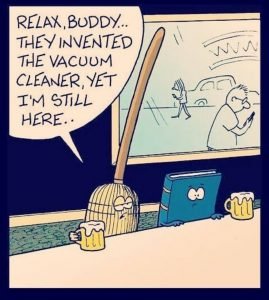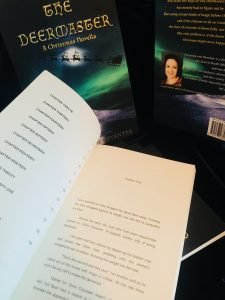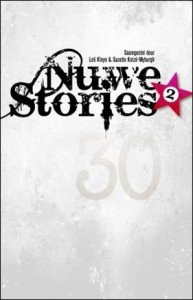This past week I had the profound pleasure of talking to Judy and Keith, who are not only writing partners, but have also been life-partners for more than forty years (they don’t look old enough for that!). Their story is such a selfless one, but not entirely smooth sailing on the publishing side of things. Read the interview below to find out more about them, their writing and their wonderful books. At the very bottom I will post a link to the article that sparked our conversation, and that can be of great value to anyone who hopes to publish Children’s fiction, or anything that contains graphic content, via Amazon Kindle.
Judy and Keith are also members of the WolfPackAuthors writers’ group. If you haven’t any idea what that is, visit @WolfPackAuthors on Twitter, and be sure to follow them. They’re pretty awesome, just like real wolves.
“Judy’s Big-nan told the best bedtime stories with witches, fairies, magic teapots…etc. Judy carried on the tradition with our children, and now we’re reaching a new generation.”
- Who are you? Tell us a bit about yourself.
Judy and Keith mainly write children’s stories. Each story tries to emphasize a moral and has to pass the acid test: Would we be happy if our own grandchildren read it?
We were born near Tamworth in the UK, met at high school, have been married for over forty years, and are now semi-retired, living in the South Bay, Los Angeles.
Judy initially followed a medical career as a radiographer and ultrasound technician in the UK and in her spare time gave piano lessons.
Keith followed a career first as an electronic engineer and later as a program manager.
In the mid-eighties, we relocated to Los Angeles where Judy switched profession to cosmetologist. We have two sons and two grandsons.
- You are both authors, and a couple?! Tell us about your books.
Keith writes, Judy edits—she says ‘why bark when you have a dog!’
Keith’s alter-ego writes adult material. Our grandson heard us discussing a story and wanted to read it. He was only eight. We promised to write a story just for him and asked what he wanted—answer, a wrestling story. Big T was the result. By the time we’d worked through all our grandchildren & god-grandchildren—we were on a roll.
Some of our earlier eBooks are no longer available individually, but we are republishing them as anthologies. The first two collections are available from Amazon, with Bedtime Stories following early in 2019.
Wicked Witch Anthology
Also available in print here.
Children’s Stories Anthology
Also available in print here.
- What motivates you to write?
It has to be our grandchildren.
- What are your writers’ Achilles Heels?
Some stories don’t resonate with Keith, and he procrastinates. A few glasses of wine in our rooftop garden usually works to break the deadlock.
- How do you negotiate plot ideas or differences in opinion about the content of your books? Is it a negotiation?
It’s a negotiation—usually involving a couple of glasses of wine. Judy is the big picture plot…Keith fills in the details.
- Your books are aimed at children and young adults. How did you come to work in this genre? What is your personal connection to the characters in your books?
See answer to Question #2
All characters are fictional…although, we do cherry pick the names we use so our grandkids can relate better to the stories.
- Of the books you’ve written, which resonates most closely with you as authors? Are there characters that hold a special relationship with your own childhoods?
The Wicked Witch series—Judy’s Big-nan told the best bedtime stories with witches, fairies, magic teapots…etc. Judy carried on the tradition with our children, and now we’re reaching a new generation.
- What is your favorite thing to discuss with your readers?
Nothing specific, although we do try and introduce morals and consequences into our stories.
- What are some of the life-changing books you’ve read, and why?
Keith fell in love with C. S Lewis’ Narnia series and E. S Nesbit’s stories…especially the blend of reality and fantasy. The idea that you can be living a mundane life…and a second later, a miracle happens…Judy’s the practical one…but, can make up a children’s story at a drop of a hat!
- You have had unique challenges with self-publishing children’s books and have overcome them in unique ways. Can you tell us a little bit about that, the illustrations and your process, also about your recently published article in regards to the challenges of publishing books for young readers?
Family and friends told us we’d reach a bigger audience if we had illustrations and the books in print. My son kept plugging away, so when Amazon offered this suite of publishing tools—effectively removing the barrier to play—we had to give them a try. The article goes into more details.
For us, we promised ourselves not to spend family money on what could be viewed as a hobby. The Amazon tools appeared too good to be true. It may be true…and in the future the tools themselves might become a profit-center, but not at the moment. We have a backlog of short stories—more than enough for two additional anthologies. We’ve turned it into a family affair, we all produce illustrations, help with marketing. Judy takes the lead with editing. Keith pulls all the parts together.
At the moment, except for the cover, we’re keeping the illustrations as pen-pencil. If these take off, we’ll consider full color. Our first front cover was home grown using an Amazon template, the second was the result of a competition.
- What was the first book you ever wrote?
Children’s stories…was Big T. It still appears on Amazon, but the publisher Devine Destinies has removed it from their website. We will include it in Bedtime Stories 1Q2019. The Mystery of the Broken Vase…still a short-story, but the theme is darker.
Big T
The Mystery of the Broken Vase
- What is your greatest passion?
Who knows? We don’t. Music’s a passion…dancing.
We firmly believe communication and doing things together are two of the three legs to keep a relationship fresh and new.
- Do you have other talents or hobbies?
Keith’s getting better at drawing illustrations…
- What are you currently reading?
Nothing in the YA-children genres.
Keith is a reviewer with TBRpile, so there is plenty of reading material. The last one was an adult detective story by Susan Laine.
- Are there any new projects in your future? What’s next for you?
One day at a time…finish the series of children anthologies. That covers 2019!! Bite the bullet with Harry Putter—a YA/NA romantic comedy…we’re stuck at 2000 words…
- And the question that everyone gets asked: Recommend one Netflix series I should watch?
Punisher…Keith
Orange is the new black…Judy
To learn more about Judy and Keith’s lovely children’s books, click here, or visit their Amazon Authors’ Page. Download their article on publishing Children’s fiction/graphic content to Amazon Kindle here.
If you are an author, book blogger/vlogger or book reviewer and would like to be featured as one of my New Kids on the Blog, DM me @StinavD on Twitter, or drop me a line at christina (at) christinavandeventer.com (please replace (at) with @).
Have a lit week!












